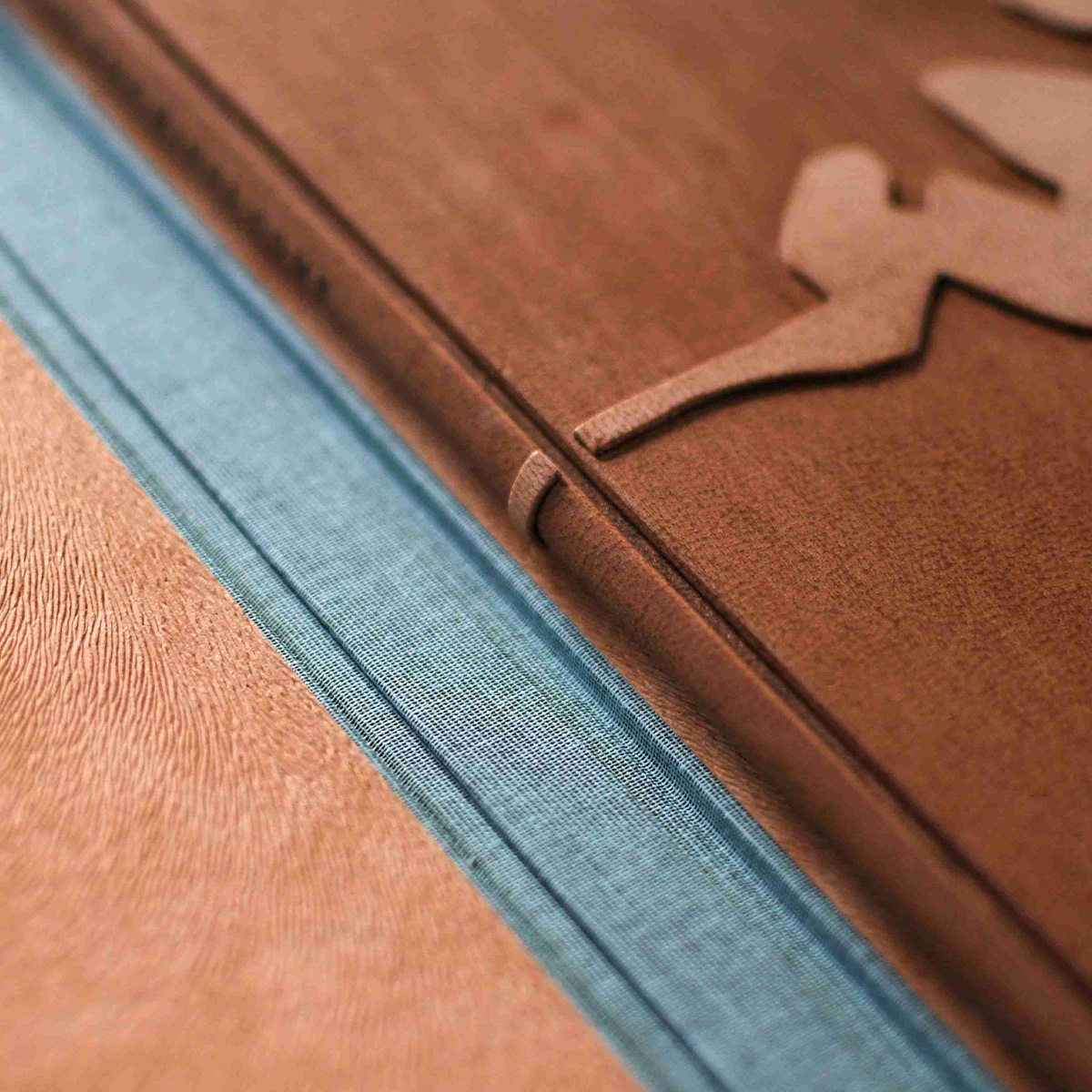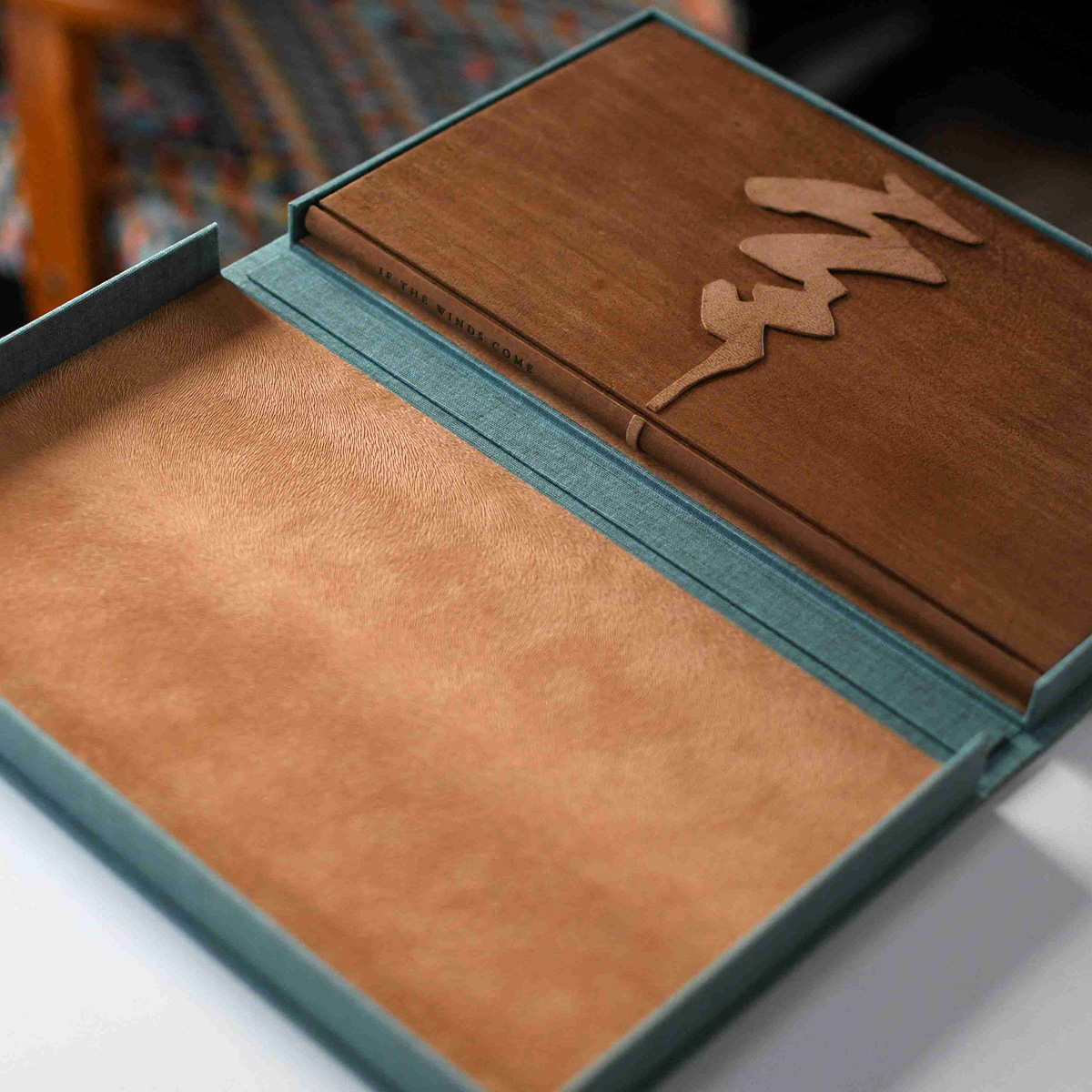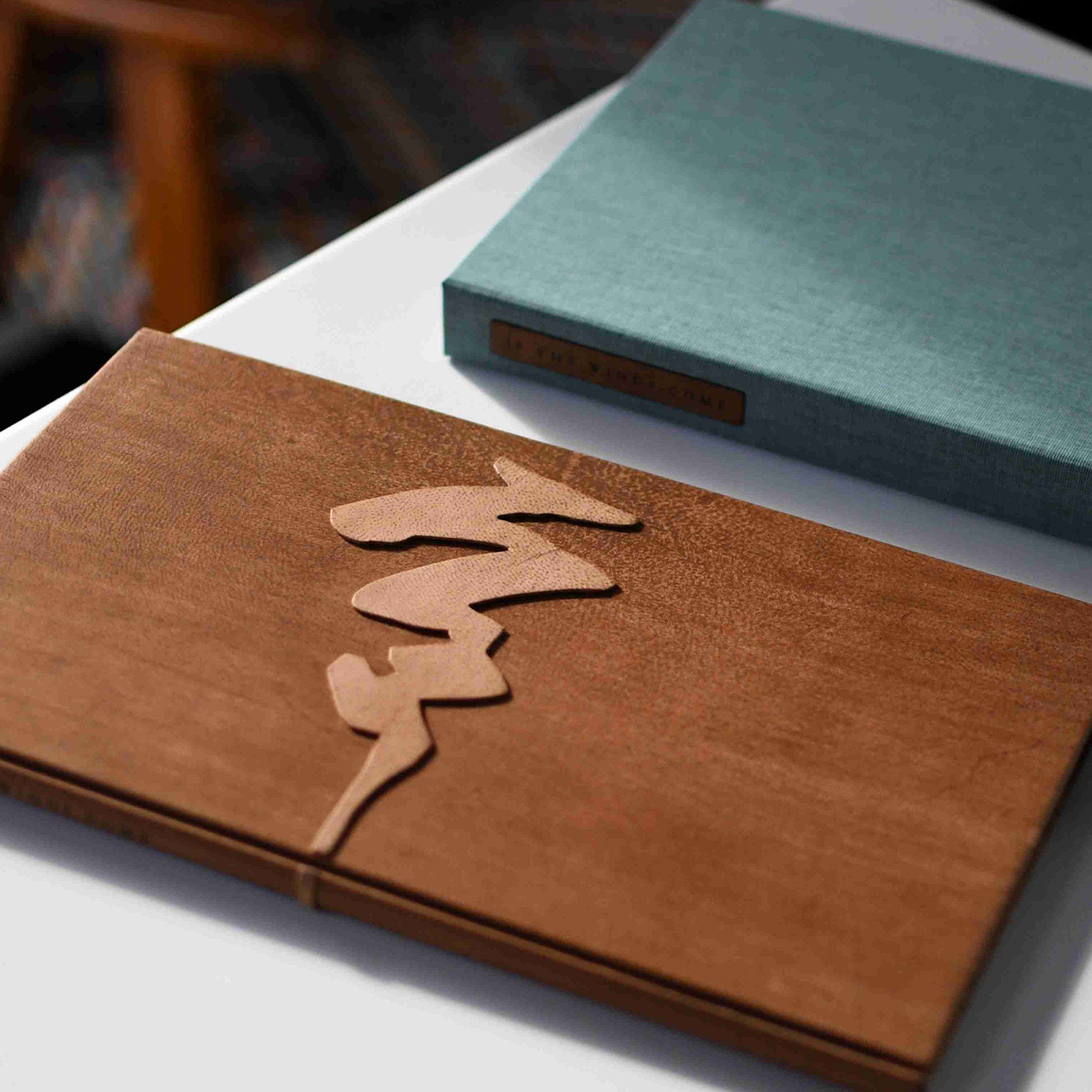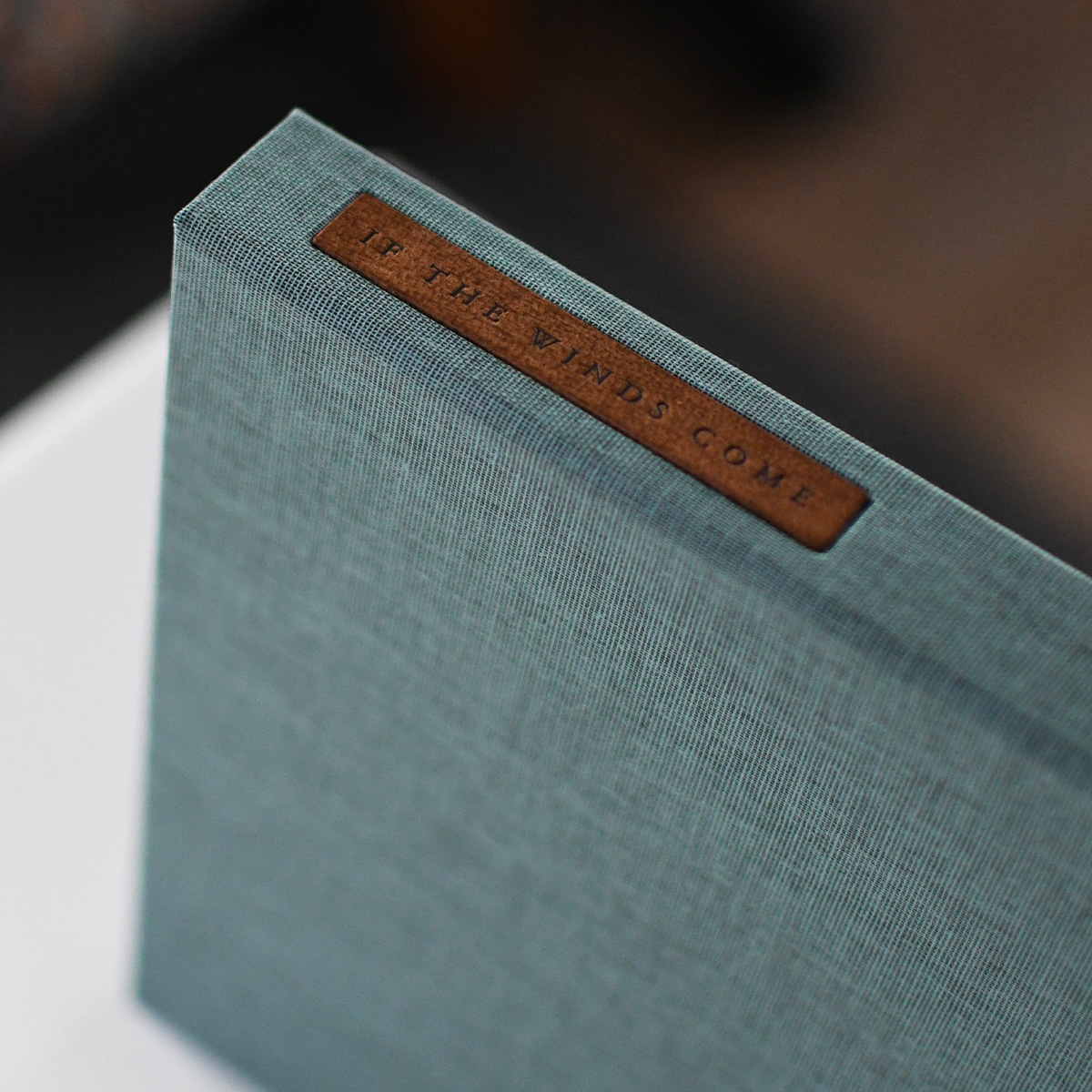If the Winds Come
Jason Dewinetz
See more images of the book in progress on our Instagram feed.
“Jason Dewinetz’s new poems in If the Winds Come touch the heart. Their passion and gentleness, their explosive, tactile, reflective imagery, and their insistence amid sometimes stifling fear and pain on finding humanity and lovingkindness at all costs, offer hope in the open hand. These poems are ‘more newborn / than middle, more gentle than bitter...’. They teach, as good poems must. I am grateful for them, the more so to find them within the arresting beauties of the paper, type, and craft of the book itself.”
—Crispin Elsted






One of 20 Deluxe copies of If the Winds Come, bound by Jacek Tylkowski in Komorniki, Poland.
2023
6.25" × 10.75", 24pp. 70 copies (50 Standard & 20 Deluxe).
Colophon:
The text has been hand set in foundry Romanée, a type designed by Jan van Krimpen and cut by P.H. Rädisch for Enschedé in 1928. Printed on a Vandercook 219 into Hahnemüle Bugra, 50 copies have been bound into a sewn-boards binding with Cave for the spine and Roma over the boards. An additional 20 copies, press-lettered A-T, have been specially bound and enclosed in a drop-spine box by Jacek Tylkowski in Komorniki, Poland.
Standard Edition: $500
Copies available, .
Deluxe Edition:
Copies available, .
A few sets of unsewn sheets are also available for custom binding: $350
Copies available, .
¶ This project had been in the back of my mind for a handful of years, but as it's my own writing I kept putting it off. What prompted me to move forward on the book was the oportunity to work with Jacek Tylkowski on the deluxe copies, a Polish binder I greatly admire (@introligatorniatylkowski). While it seemed crudely indulgent to work with Jacek on my own book, it also seemed a good test-run: if it didn't pan out, I wouldn't be disappointing anyone but myself. I also planned to only produce as many deluxe copies as I could pre-sell, so if there was no interest, I'd only have Jacek produce one or two copies so that we could test out the process of collaborating. However, fairly quickly, enough reservations for the deluxe issue came in to warrant an edition of 20 copies (the max I wanted to do), so that was settled.
¶After plenty of discussion and swapping ideas back and forth, Jacek produced a prototype binding that included a haptic onlay in three pieces, one each on the back, spine, and front of the binding. Each copy of the book is unique in that the ink painting on the title page was done by hand, so that no two paintings are alike. Jacek's plan was to run with this idea, and the onlay for each copy has been cut to follow the outline of the ink painting on that copy's title page. In this way, each deluxe copy binding is also unique. Bound in full sanded leather in a Bradel structure, with the haptic onlay in the same leather, the title is foil-stamped on the spine. The book is then enclosed in full cloth, drop-spine box lined with suede and including a recessed leather spine label. The deluxe copies are also press-lettered A-T in the elegant swash capitals of 16ptD Romanée (see this Instagram post for more on the press-lettering).
¶The binding of the regular copies also involved trying something new, which found me learning and executing the book in a sewn-boards structure. I first encountered this style of binding on Russell Maret's Aethelwold, bound by Craig Jenson, and have seen it since a number of times. One of the many attractive features of this structure is the edge-to-edge paste-downs. I've always found the exposed square around the inside edges of case-bound books to be irksome, especially if they're larger than 1/16", but placing the pastedown accurately with such a tight margin can be tricky. While the overhang of a bound book (the square) is meant to protect the page edges, this overhang needs only be slightly beyond those edges, only around 1/64", to do it's job, and this is provided simply by the thickness of the binding paper wrapping the boards. The effect of the sewn-boards binding is a much tidier looking book, with the head, foot, and fore edges all being near, but not quite, flush. The binding of the regular copies involved more than a dozen individual steps, including sewing the blocks, tipping the boards into the block, laser-cutting the spine pieces and gluing-in the titled spine liners, adding in slips to cover the exposed edges of the boards, gluing-up and lining the blocks, pasting on the spine pieces, then covering the boards and tipping down the endsheets. As such, this is definitely the most involved process I've taken on to bind a book, but it continued to build my skills and my growing pleasure in doing the binding myself.
 Jason Dewinetz is a writer, editor, publisher and typographer originally from, and now living back in, the Okanagan Valley. With an academic background in English Literature (BA. UVic, MA, U of Alberta), he is the author of The Gift of a Good Knife (Outlaw Editions), Moving to the Clear (NeWest Press), Clench (Gaspereau Press), Friends & Family and If the Winds Come, and co-author of A Bibliography of the Black Sparrow Press (University of Alberta Press). He is the founding editor, publisher and designer of Greenboathouse Press, and his design and production for Greenboathouse has brought in more than a dozen national book design awards. Jason is a current board member and past-North American Chair of the Fine Press Book Association, and is an instructor in the Writing and Publishing program at Okanagan College.
Jason Dewinetz is a writer, editor, publisher and typographer originally from, and now living back in, the Okanagan Valley. With an academic background in English Literature (BA. UVic, MA, U of Alberta), he is the author of The Gift of a Good Knife (Outlaw Editions), Moving to the Clear (NeWest Press), Clench (Gaspereau Press), Friends & Family and If the Winds Come, and co-author of A Bibliography of the Black Sparrow Press (University of Alberta Press). He is the founding editor, publisher and designer of Greenboathouse Press, and his design and production for Greenboathouse has brought in more than a dozen national book design awards. Jason is a current board member and past-North American Chair of the Fine Press Book Association, and is an instructor in the Writing and Publishing program at Okanagan College.